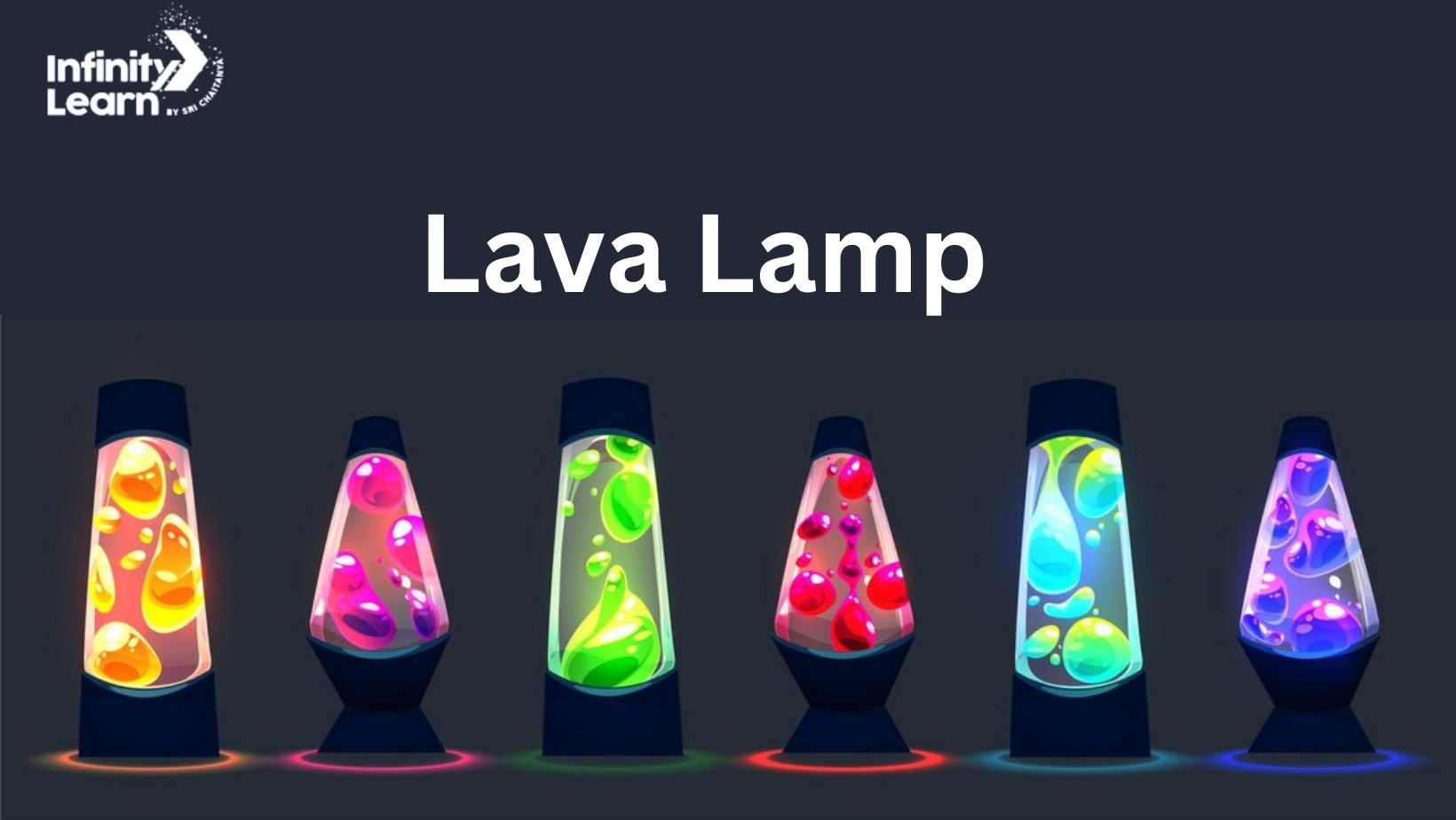Table of Contents
Lava lamps are also known as liquid motion lamps. The hypothesis of a lava lamp is about the density of two liquids and the solubility of the two same liquids. The two liquids used in lava lamps are very close to each other in density and are insoluble in each other. Mostly, people use oil and water as they are insoluble in each other. But these liquids have different densities from each other. So, we need liquids whose densities are very close to each other.
Also Check: Mercury Metal
When the two liquids are found, heat the bottom of the mixture using a light bulb. The liquid with a higher density will absorb the heat and expand. While expanding, low becomes less dense. Both liquids have similar densities; the previously denser liquid becomes lighter and rises over the other liquid. This happens in a passive motion. Density change occurs very mildly.

When does a Lava Lamp expire?
Lava Lamp lasts nearly 2000 hours. After this, the bottle should be changed or replaced with a new lava lamp. The lava lamp starts working after one hour of turning on. Nowadays, most lava lamps run on batteries. Batteries can be changed if the lamp stops working.
Also Check: Nitrogen
Lava Lamp Experiment
The principle of the Lava Lamp Experiment is density and polarity. The Lava Lamp experiment explains why oil and water don’t mix. Let’s see how to make a Lava Lamp:
Apparatus Needed
- A flask or a bottle
- Water
- Vegetable Oil
- Alka- Seltzer or some other fizz tablets
Also Check: Magnesium
Procedure
- Fill the bottle with water upto quarter. Use a funnel to fill so that the water doesn’t spill out.
- Add vegetable oil to the bottle. Keep adding until it is full to the brim.
- Wait until the vegetable oil and water levels separate.
- Add food color to the mixture. Food color is water based, it will sink and settle at the bottom.
- Break Alka- Seltzer tablet into small pieces. Add them to the flask one by one.
- As soon the tables are added, the reactions will start inside the bottle.
- Keep adding more tablets if the lava lamp reaction stops.
Also Check: Mercury Element
Observation
The oil density is lower than the water’s in the lava lamp experiment. The water and oil stay separate due to their density. Food colouring mixes with water as it has the same density as that of water. When we add Alka- Seltzer tablets in the bottle, carbon dioxide is released, appearing as small bubbles. It reaches the top by taking some water along with it. The colour falls back when the bubbles disappear on the top. If we add more tablets, the reaction will go for a longer time.
Lava Lamp Experiment Explanation
- Oil has a less dense composition than water, so it stays afloat on top of the water. The density of food coloring and water is the same; it sinks through the oil and combines with it.
- When the tablet is dropped in it, it settles to the bottom and starts to dissolve, and carbon dioxide is emitted. As the gas is lighter than water, it hovers to the surface. Air bubbles carry colored water to the surface.
- When air escapes from the color water, water becomes heavy and sinks. The process is repeated until the tablet is entirely dissolved.
- We can add more tablets to run the Lava Lamp Experiment for a longer period of time.
Also Check: Chlorine
Fun Facts About the Lava Lamp Experiment
- The Lava Lamp was discovered in 1948. It took about 15 years to design the ideal lava lamp.
- No two lava lamps can be the same.
- Earlier, the lava lamps were considered as unusual and luxurious items. But now they have become accessorized products.
- Lava Lamps can be highly expensive.
- Nowadays, the lava lamp experiment is a widespread and fun experiment for kids.
- The most massive lava lamp holds thousands of gallons of lava.
What is Density?
Density is a measurement of how compact or denser a substance is. It is also defined as the mass per unit volume.
Density Formula:
The formula to calculate density is:
Density=MassVolume
This formula helps determine how much mass occupies a specific volume.
Density of Water:
The density of water is around 1 gram per cubic centimetre, providing a baseline for understanding this essential property of liquids.
Density of Air:
Referring to how much mass of air is present in a certain volume, the density of air is a key factor in various scientific and atmospheric discussions.
Density Units:
Density is commonly measured in units like grams per cubic centimeter. Understanding these units is crucial in expressing and comparing the density of different substances.
What is Polarity?
Polarity refers to the positive or negative charge of an atom or molecule. Or it can be defined as the distribution of electrical charge within a molecule.
Lava Lamp: FAQs
On which principle does the Lava Lamp Experiment work?
The Lava Lamp Experiment works on the principle of density and polarity.
What happens when fizz tablets are dropped in the bottle?
When fizz tablets are dropped in the bottle, carbon dioxide is released in the form of small bubbles. It reaches the top by taking some of the water along with it.
What is the relation between temperature and density?
Density is inversely proportional to temperature.
What are the reactions taking place in the Lava Lamp Experiment?
Alka Seltzer, when reacted with water, produce bubbles of carbon dioxide. They stick to the water droplets. The combination of water and gas is less than the oil. They rise to the top of the flask. The real lava lamp uses polar and non-polar liquids. The Lava Lamp measures density and polarity.







